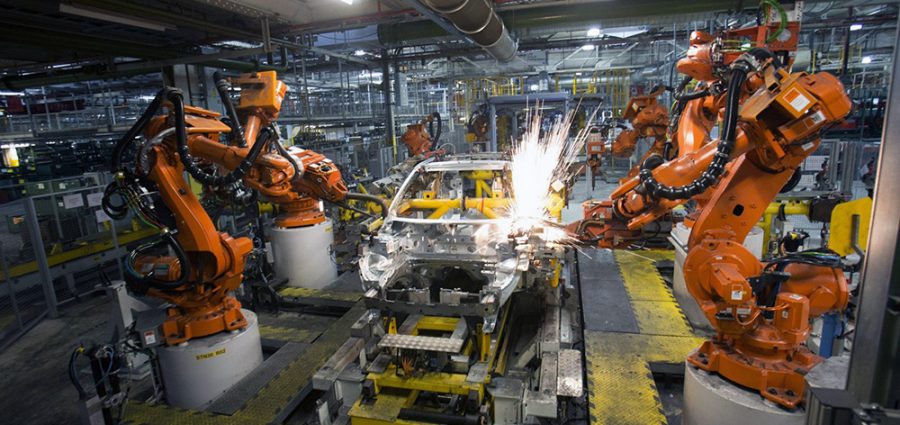Global productivity fell in 2020 but it will recover through 2021, according to the latest release of annual productivity growth rates for 131 countries by The Conference Board.
Globally, growth in output per worker fell 0.9 percent in 2020 after rising 1.0 percent in 2019, but is projected to rebound to 2.9 percent growth in 2021. These productivity improvements are unlikely to be sustained, however, as they are driven by the global economy reopening amid a waning pandemic. The latest estimates extend the downward trend in global labor productivity growth from an average annual rate of 2.6 percent between 2000-2007 to 1.7 percent between 2011-2019. The latter is roughly the same as the average growth rate of output per worker in 2019-2021.
“Recent years have seen the bottoming out of a decade-long trend of weak productivity growth,” said Ataman Ozyildirim, Senior Director, Economic Research at The Conference Board. “But while productivity growth is projected to rebound in 2021, these gains are likely to be transitory without further acceleration in digital transformation, accompanied by sustained investments in new business models, modern infrastructure, and human capital for the twenty-first century. Such investments could set the stage for a revival in productivity trends for the next decade, leading to a more balanced, sustainable, and innovative economic recovery that uses resources more efficiently and increases overall living standards. However, many hurdles to achieving this productivity revival remain. These include the risk of labor-market scarring, extended unemployment after the pandemic, legacy technologies and slow investment in digital transformation, an imbalanced recovery and increasing inequality.”
The 2021 Productivity Brief is based on data from The Conference Board Total Economy Database, which are comprised of labor productivity measures, including output per worker or per worker-hour. Later this year, The Conference Board will also publish the Total Factor Productivity measure, which provides a more accurate picture of the overall efficiency by which capital, labor, and skills are combined in the production process.
Among the world’s mature economies, the long-term productivity slowdown appears to have hit bottom, with further deterioration unlikely but also no clear signs of a revival yet. Emerging markets still have a substantial productivity growth advantage over mature economies. However, overall productivity growth rates in emerging markets have been slowing since 2010, and this downward trajectory should continue in the post-pandemic period.
“In the wake of the pandemic recession, productivity growth rates in emerging markets and mature economies are converging,” said The Conference Board economist Klaas de Vries, “but thus far for the wrong reason. The former are running out of catch-up potential while the latter have been slow to reverse weakening productivity trends. However, a more positive convergence is possible in the years ahead. Mature economies with strong human capital bases and well-developed innovation systems—in particular, the US, Europe, and Japan—are proposing long-term investments with the potential to substantially accelerate productivity. If executed successfully, they offer an opportunity to close the competitive edge that the largest emerging economies have seized in recent decades.”
Key Regional Highlights
- In the United States, growth in output per hour accelerated to 2.5 percent in 2020 compared to 1.3 percent in 2019—driven by the deep and sudden pandemic downturn early last year. Growth in hourly output slowed from +2.2 percent in 2000-07 to +0.7 percent in 2011-19.
- Meanwhile, growth in total hours worked ticked up from +0.5 percent in 2000-07 to +1.5 percent in 2011-19, before falling −5.8 percent in 2020 amid COVID-19 shutdowns. Total hours worked is projected to increase 4.7 percent in 2021. Still, US labor productivity growth is ahead of that in most other mature economies.
- In the Euro Area, 2020 was an exceptionally weak year for productivity growth, driven by the pandemic recession. Hourly output grew by +0.8 percent in 2020, above 2019’s +0.4 percent but comparable to the 2011-2019 average of +0.7 percent.
- Among large European economies, productivity in 2020 climbed modestly in France, fell slightly in Germany, and dropped by a substantial −0.6 percent in Spain.
- The stagnation in productivity growth in Germany in the last three years was likely due in part to weakening trade growth with China as well as COVID-19.
- Output per hour in the United Kingdom has remained stagnant over the past three years, at +0.4 percent in 2018, unchanged in 2019, and +0.4 percent in 2020.
- Among mature economies, the UK saw the sharpest decline in productivity growth rates between 2000-2007 (+2.1 percent) and 2011-2019 (+0.3 percent).
- While strong employment performance in part offset the UK’s productivity growth weakness, the growth rate of hours worked has rapidly declined recently, but it is forecast to increase by 4.8 percent in 2021.
- Among the eight largest emerging markets (Brazil, China, India, Indonesia, Mexico, Russia, South Africa and Turkey), growth in output per worker slowed from +5.2 percent between 2000-2007 to +3.5 percent between 2011-2019.
- China‘s growth in output per worker dropped from +8.1 percent in 2000-2007 to +4.2 percent in 2011-2019, according to The Conference Board’s alternative estimates of Chinese GDP. Even so, China’s productivity growth rates are still upwards of four times larger than those across the mature economies.
- India continues to lead the largest emerging economies with output per worker averaging +6.1 percent growth between 2011-2019. However, output per worker remains just 14 percent of US levels.
- Average productivity growth in Latin America remained negative for two consecutive years in 2018 and 2019, showing that the region continues to struggle with the legacy of decades of weak growth in output per worker. Output per worker is projected to increase by only 0.1 percent in 2021 after rising by 1.8 percent in 2020.






